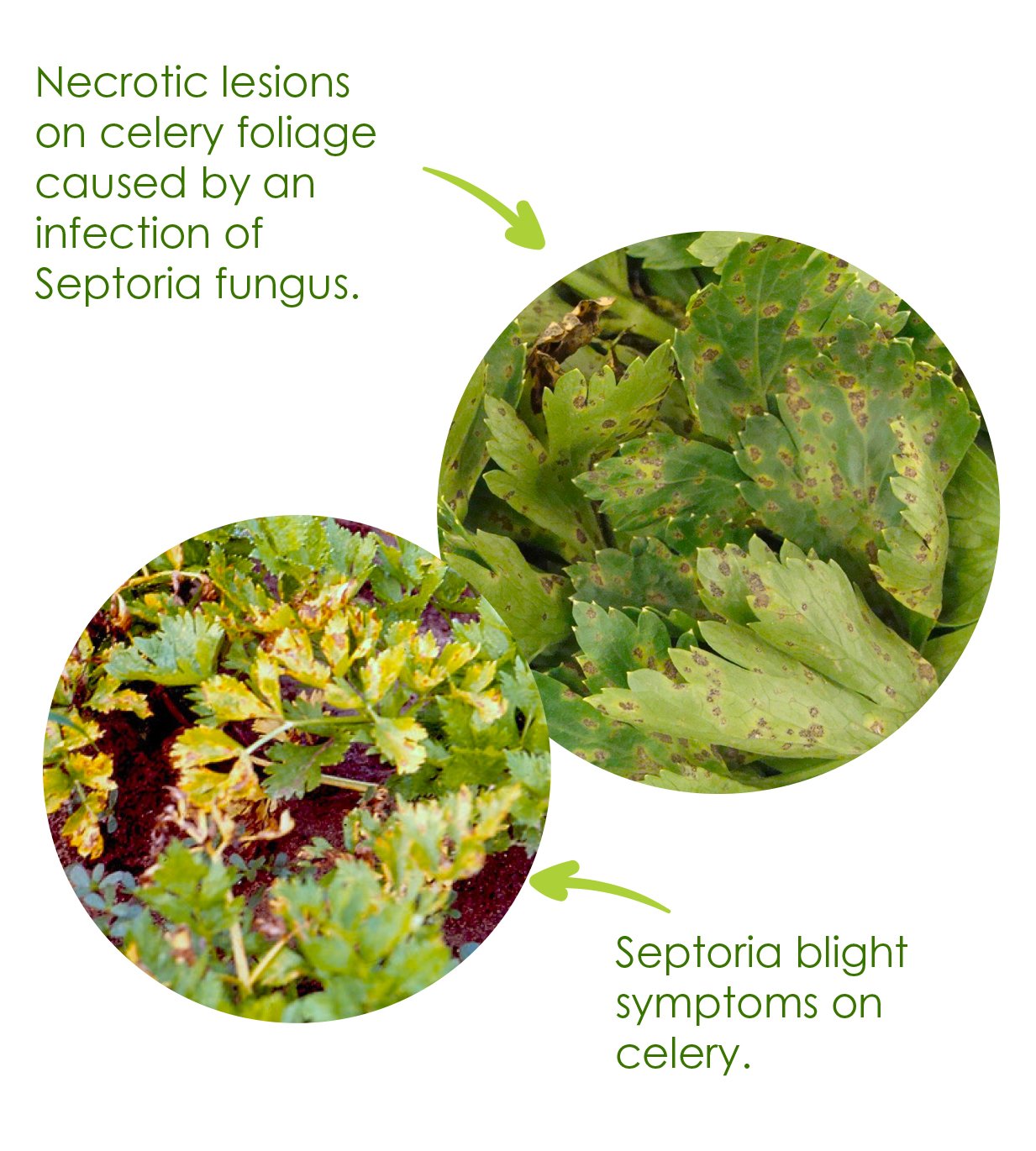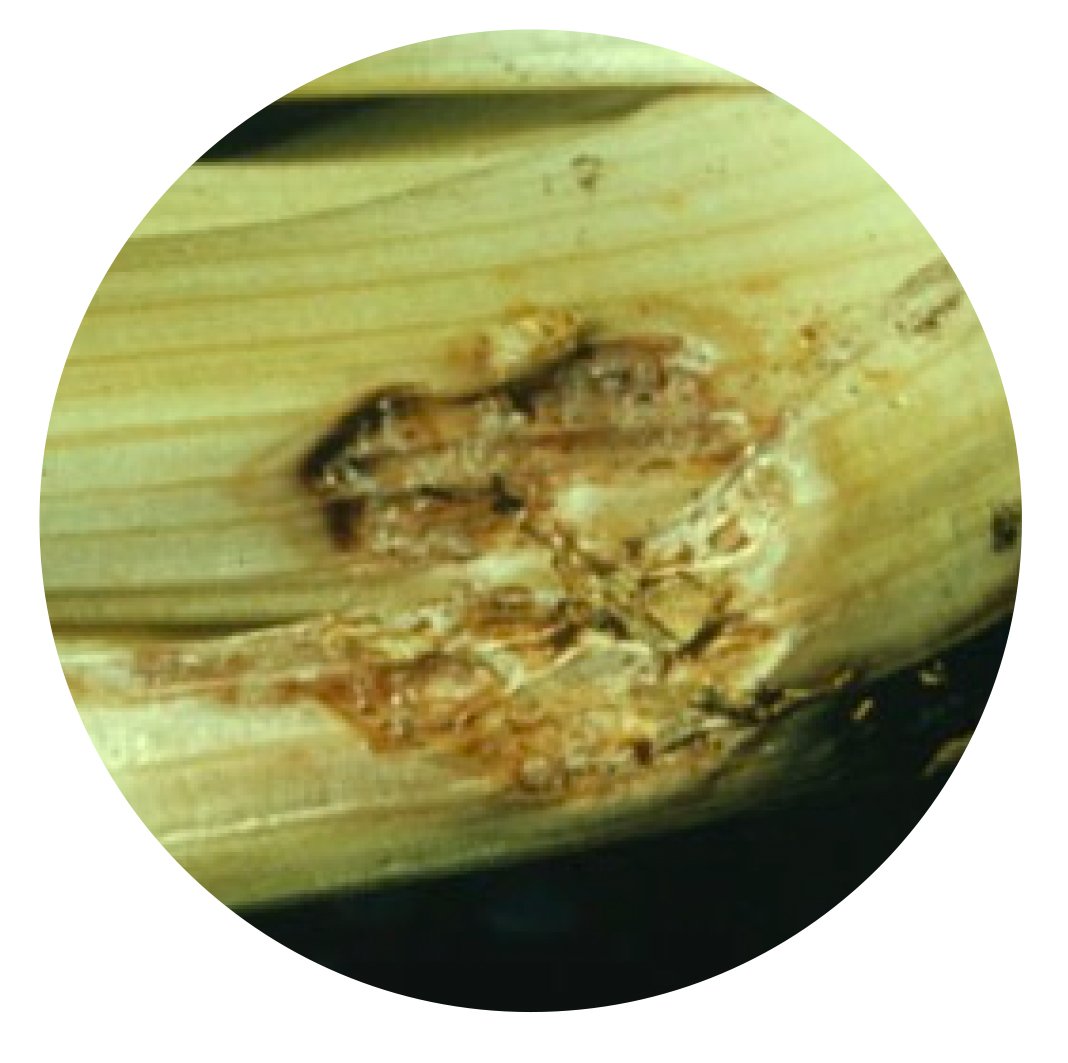COMMON DISEASES IN CELERY
01 Jul 2024 by KATE MACLEAN
EARLY BLIGHT
(Cercospora leaf spot, Cercospora blight, Cercospora apii)
SYMPTOMS Small yellow flecks on upper and lower leaf surface, which enlarge to brown/grey spots with no defined border. Lesions develop a papery texture. Leaves with lesions can turn necrotic and die. Cercospora may also infect the celery petioles when disease pressure is high.
CAUSE
Fungus.
COMMENTS
Favourable conditions for disease emergence are warm temperatures and prolonged leaf wetness. Early blight is differentiated from late blight by the absence of black fungal fruiting bodies embedded in the leaves and larger lesions. Cercospora usually appears earlier than Septoria within a crop. The fungus is both seed-borne and soil-borne and can survive in infected plant residues in the soil. MANAGEMENT In areas where warm temperatures and high humidity favour the emergence of early blight, control must rely on multiple different measures such as crop rotations, avoidance of overcrowding, variety resistance and appropriate application of fungicides.
LATE BLIGHT - SEPTORIA LEAF BLIGHT
(Septoria apiicola)
SYMPTOMS
Irregularly shaped chlorotic spots on leaves and petioles, which turn necrotic and join, forming large necrotic areas. Black fruiting bodies are visible, embedded in leaf tissue and can resemble peppercorns.
CAUSE
Fungus.
COMMENTS
Disease favours areas with heavy rainfall and dense leaf canopies which prevent air circulation. Fungus is spread via rainfall, or a combination of contaminated irrigation water and the movement of people, tools and/ or machinery.
MANAGEMENT
Plant pathogen-free seed. If disease is present, avoid working an area when plants are wet and apply appropriate foliar fungicides where available.

PINK ROT
(Sclerotinia sclerotiorum)

SYMPTOMS
Soft brown lesions at the base of stalks, with pink margins, which cause the entire stalk to rot, turn brown and collapse. Large fungal bodies are visible on infected tissue. When young seedlings are infected, the fungus causing damping-off is visible on the seedling stems near the soil line.
CAUSE
Fungus.
COMMENTS
Fungus can survive in the soil for up to 10 years. Favourable conditions for disease emergence are soils that are close to saturation point for periods of more than two weeks. Most Sclerotinia damage happens when crops are getting close to being ready and the plant canopy is getting bigger. As a result, pink rot may look like bacterial soft rot.
MANAGEMENT
Husbandry practices play a significant role in the control of pink rot. Deep ploughing of soil and allowing suitable air flow throughout a crop is useful. In periods of extended cool and damp weather, the use of fungicides to control pink rot may be beneficial.
SOFT ROT
(Erwinia carotovora, Erwinia chrysanthemum, Pseudomonas marginalis)
SYMPTOMS
Small water-soaked lesions near base of petioles which become soft, sunken and brown.
CAUSE
Bacteria.
COMMENTS
Bacteria thrive in oxygen-depleted plant tissues, disease emergence requires extended periods of water saturated soil, bacteria enter plants through wounds.
MANAGEMENT
Control relies on the avoidance of conditions conducive to bacterial infestation. Plant celery in well-draining soils, allow plants to dry before irrigating again, avoid wounding plants during harvest to prevent post-harvest development of disease. Disinfect all equipment regularly.
CELERY MOSAIC VIRUS SYMPTOMS
Leaves become twisted, curled or cupped. Dark green mottling on petioles. Young plants may become stunted.
CAUSE
Virus.
COMMENTS
The virus is transmitted by several species of aphid. Aphids can successfully transmit the virus to plants within 30 seconds of feeding. Symptoms typically develop within 10 days of the primary infection.
MANAGEMENT
Good control of aphid numbers is important in controlling the spread of this virus. Variety selection can play a role in the control of this virus also.
